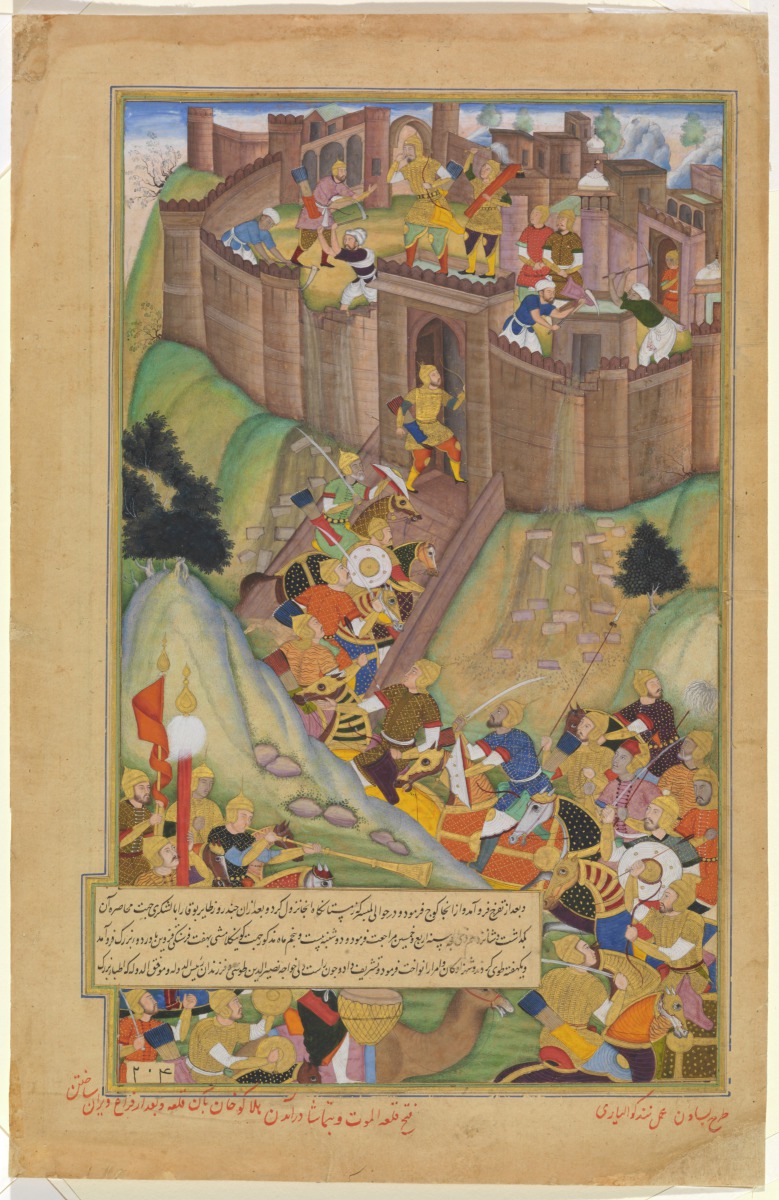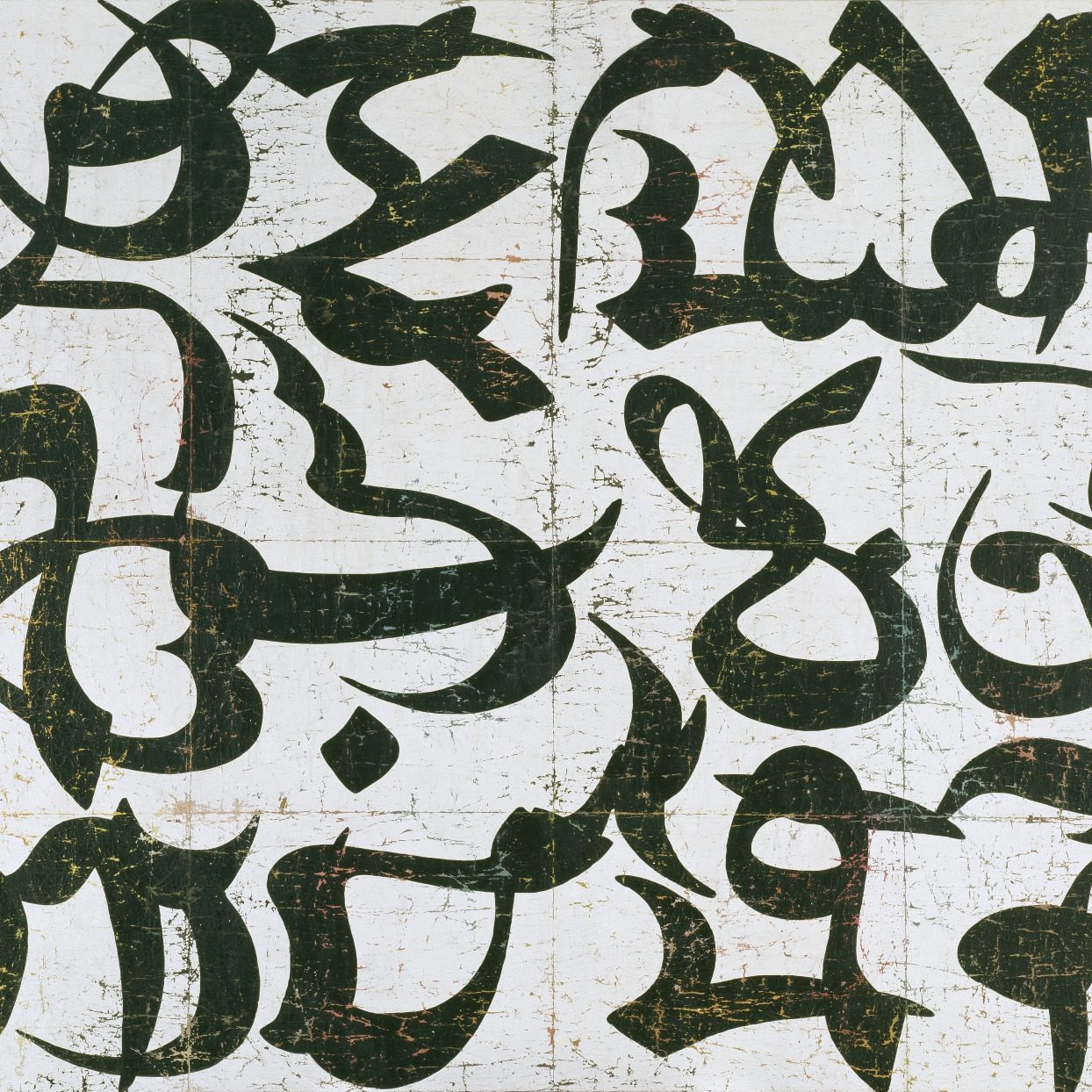
Page from a Chinghiz-nama Manuscript: Hulagu Khan Destroys the Fort at Alamut (Primary Title)
Nand Gwaliori (Colorist)
Basawan, Indian, fl. 1580–1600 (Designer)
This page comes from another lavishly illustrated dynastic history commissioned by Mughal Emperor Akbar: the Chinghiz-nama (History of Genghis), completed in 1596. Taken from the early 14th-century Persian Jami al-Tawarikh (Universal History), its text traces the history of Genghis Khan and the Mongols. As their dynastic name denotes, the Mughals traced their lineage to the Genghis. Thus, much like the Safavids had with their lavish Shahnama commission, Akbar was asserting his political authority by underscoring his connections with world history’s most renowned conqueror. This page depicts Genghis’s grandson Hulagu Khan directing the seizure of the Persian fort of Alamut following its surrender on December 15, 1256. He stands on the ramparts above the main gate of the fortress while his workmen tear down the walls around him and his soldiers stream into the fort. The detailed rendering of these troops, their trappings, and the trees that punctuate the landscape reveals the Mughal interest in naturalism and precise visual observation.
Some object records are not complete and do not reflect VMFA's full and current knowledge. VMFA makes routine updates as records are reviewed and enhanced.

